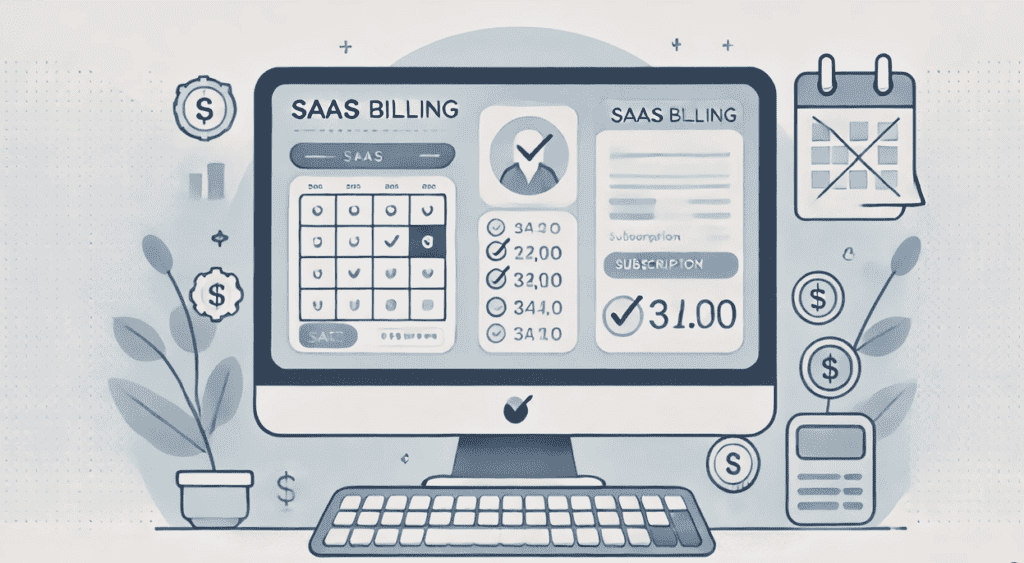SaaS billing: How to manage billing effectively in your SaaS business
SaaS billing refers to the invoicing of software subscriptions—and it can quickly become complex, especially as your customer base grows and subscription plans change. Manual handling is time-consuming and risky. In this article, we look at how to manage SaaS billing efficiently to save time, reduce errors, and improve your liquidity.

What makes SaaS billing different from traditional invoicing?
In the SaaS industry, customer needs are constantly changing. They upgrade, downgrade, pause, or cancel subscriptions at short notice. This requires a flexible subscription system that can handle changes smoothly. Traditional invoicing systems often lack this flexibility, which can lead to errors and lost revenue.
For example, imagine a customer upgrading from a “Basic” to a “Pro” plan halfway through a billing cycle. An effective SaaS billing system should automatically register the change, calculate a prorated amount, and issue a corrected invoice—all without manual input.
With the right systems, changes in billing periods become more manageable and give your business the flexibility to offer more customer-friendly agreements. That’s something customers appreciate—and it helps reduce churn.
Benefits of automated SaaS billing
Here are key benefits of SaaS billing processes.
Reduces administrative costs and errors
Automatic billing eliminates many manual tasks and reduces the risk of mistakes. You save time and money on administration while ensuring that invoices are accurate and delivered on time.
Ensures stable liquidity
When invoices are sent automatically and on schedule, you receive payments faster. This creates a stable cash flow, which is essential for operating and growing your SaaS business effectively.
Increases customer satisfaction
Automated SaaS billing makes it easy to upgrade, downgrade, and adjust subscriptions. Customers experience flexibility, which improves satisfaction and lowers churn.
Key features of a good SaaS billing system
When choosing a subscription system for SaaS billing, be sure it offers these essential features:
- Automated invoicing and subscription management: Your system should handle automatic invoices based on the customer’s subscription without manual effort.
- Integration with accounting software: Your billing system should integrate easily with your accounting platform, such as e-conomic or Dinero, for automatic bookkeeping.
- Simple handling of variable pricing: It should be easy to manage discounts, variable prices, add-ons, and different subscription levels.
- Advanced features like dunning and metered billing: A strong system supports dunning processes (automated handling of failed payments) and usage-based billing, where customers pay based on actual use.
- An open API: An open API allows your business to customize workflows and internal processes.
Platforms like Alunta offer precisely these features, ensuring a professional and reliable operation for your subscription business.
How to optimize your SaaS billing process with Alunta
Alunta is specifically designed to make SaaS billing simple and efficient. With Alunta, you can:
- Automate billing: The system automatically handles invoicing and payment reminders, ensuring timely payment.
- Flexible subscription management: Easily adjust subscriptions, pricing, and terms so your offerings always meet customer needs.
- Integration and reporting: Alunta integrates seamlessly with accounting software and provides clear reports on revenue and customer subscription status—including MRR (Monthly Recurring Revenue).
Imagine a small SaaS company with 200 customers, where 10% change their subscription type each month. Without automation, this would require several hours of manual updates and invoicing. With Alunta, subscriptions are adjusted automatically, and invoices are sent correctly—without extra work. That frees up time for product development and customer support.
Conclusion
Effective SaaS billing is essential for your company’s success and growth. By choosing an automated subscription system like Alunta, you can minimize errors, save time on administration, and strengthen your liquidity. Try Alunta today and experience the power of automated billing.